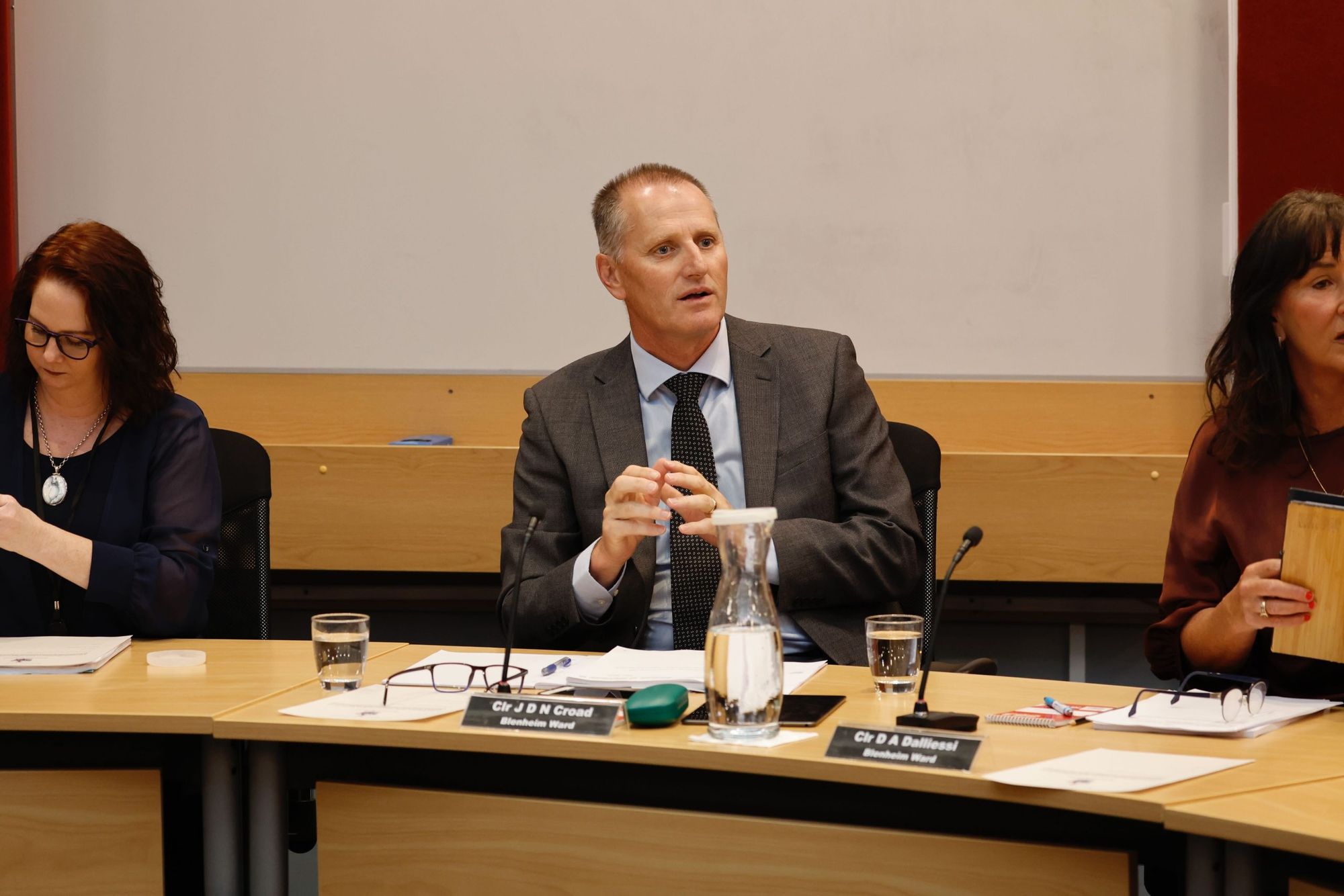Marlborough considers zone change to allow for 200-home subdivision


Marlborough deputy mayor David Croad supported the two proposed variations to the Marlborough Environment Plan. Photo: Anthony Phelps/Stuff
A vineyard next to a new subdivision in Blenheim could be pulled out to make way for 200 homes.
The land, dubbed Kerepi – te reo Māori for grapes – is a 12 hectare property on Old Renwick Rd in Springlands, neighbouring Rose Manor subdivision.
But the Marlborough District Council first needs to approve two separate variations to the Proposed Marlborough Environment Plan (PMEP), which will require consultation.
Council strategic planner Jamie Sigmund told the Environment and Planning Committee on Thursday the first variation was to change the zoning of the land at Kerepi from rural to residential.
“The approval allows the initiation of a process – but it does not represent the approval of the variation,” Sigmund said.

Following consultation with relevant parties, including landowners and tangata whenua, a “final version” of the proposed variation would be brought back to the committee to approve a further round of consultation and public notification.
A report prepared by Sigmund for the meeting said the Kerepi site was relatively flat, had one house and several smaller outbuildings.
An agent working on behalf of Kerepi Ltd had commissioned several technical reports to support the variation process, including a geotechnical review, contaminated land assessment, traffic impact assessment, infrastructure servicing report, master plan and urban design considerations.
Council staff were said to be comfortable with the content of these reports.
A Housing and Business Development Capacity Assessment, presented to council early last year, found Marlborough would run out of land zoned for housing within 30 years – leading to a likely shortfall of 900 homes.
Marlborough’s population was projected to reach 61,000 by 2048, with nearly 80 per cent of that growth expected within 10 kilometres of central Blenheim.
Kerepi was on the north-west of Blenheim and could have a “potential yield of 200 homes”.
Sigmund said the master plan, while not finalised, had indicated the developer wanted to include a “higher intensity section” in the centre of the proposed development, with some “balance” on the outside.
“The numbers (200 homes) is more of an indicative outline of what the intent is at this stage,” he said.
“As we go through the process, and we go through consultation it might refine and once we get to a point where it's finalised we will have an exact number and exact position.
“But even then it's still subject to some other processes, like road layout.”

Deputy mayor David Croad, who could not vote on the variation until it went to full council next month, said he wanted to speak “in support” of the proposal.
“If we want Marlborough to continue to grow, and we want land and housing to remain affordable, we have to ensure that we keep supply up.”
Marlborough mayor Nadine Taylor said she was also “very supportive”.
“We have the studies that say that we have a residential shortfall,” Taylor said.
“This is a way to address it ... I think it's an important variation for the province.”
Meanwhile, the council was also looking to add a new variation into the PMEP – an “Urban Residential Zone 4”.
That zone was for “greenfields”, and applied to “previously undeveloped rural areas”, Sigmund said. They could then be considered for medium density housing.
The development could be for any land use, including residential, commercial and industrial.
The proposed definition for medium density housing was a residential development with an average lot size smaller than the existing Urban Residential 1 minimum lot size of 290m2.
Lot widths would be narrower than the Urban Residential 1 zone minimum of 14m. They would be limited to single-and double-storey buildings.
The council had been asked to consider part of Kerepi for medium density housing.
Croad again expressed his support for the variation.
“Marlborough is ready for this and people are ready for this,” he said.
“We've been asked by developers about being more enabling. This residential 4 achieves it.”
The Proposed Marlborough Environment Plan, released in 2020, fused together the region’s major management plans into a single document. Rose Manor subdivision was approved in 2017.
Public Interest Journalism funded through NZ on Air.
